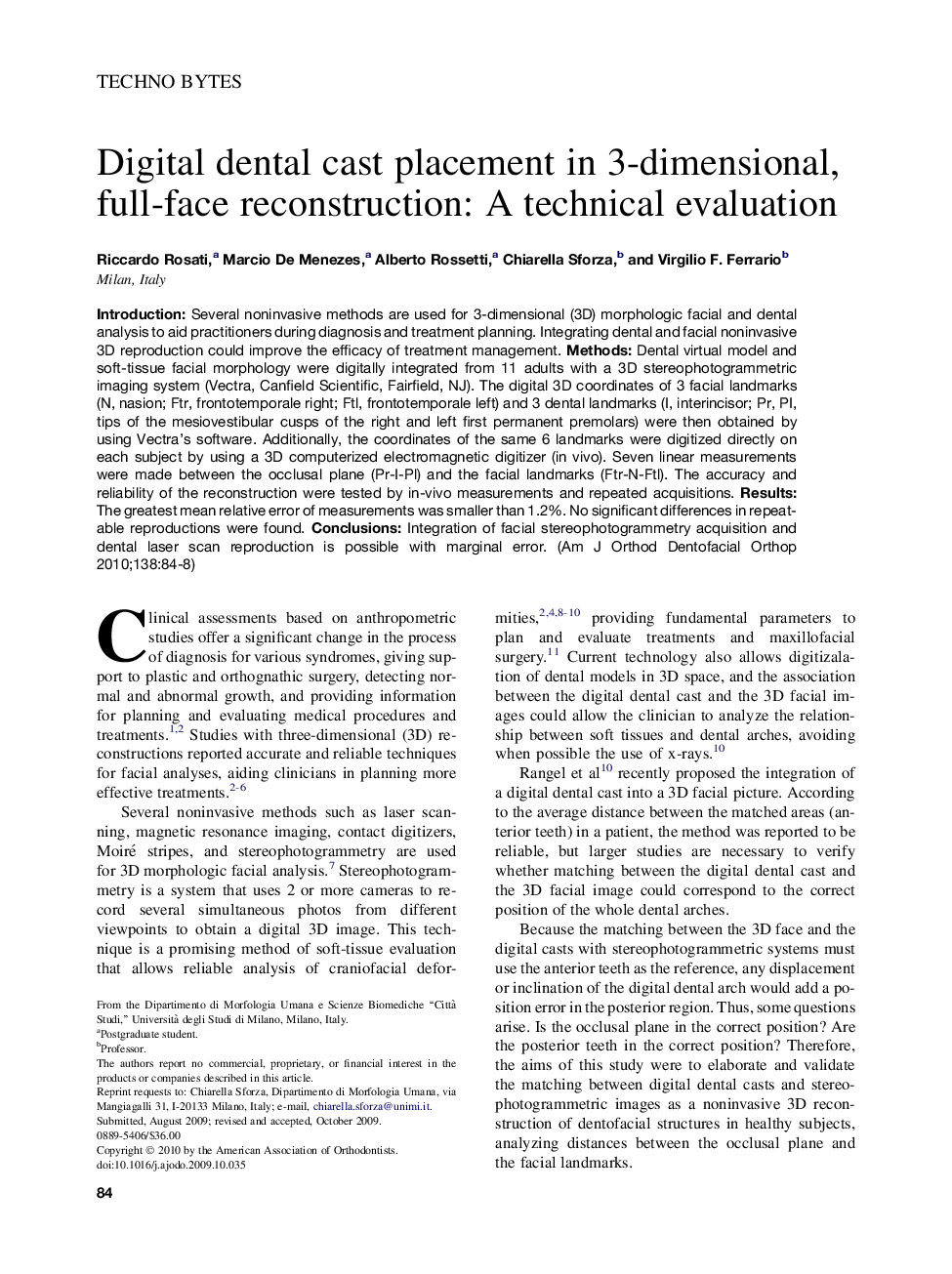| Article ID | Journal | Published Year | Pages | File Type |
|---|---|---|---|---|
| 3117466 | American Journal of Orthodontics and Dentofacial Orthopedics | 2010 | 5 Pages |
IntroductionSeveral noninvasive methods are used for 3-dimensional (3D) morphologic facial and dental analysis to aid practitioners during diagnosis and treatment planning. Integrating dental and facial noninvasive 3D reproduction could improve the efficacy of treatment management.MethodsDental virtual model and soft-tissue facial morphology were digitally integrated from 11 adults with a 3D stereophotogrammetric imaging system (Vectra, Canfield Scientific, Fairfield, NJ). The digital 3D coordinates of 3 facial landmarks (N, nasion; Ftr, frontotemporale right; Ftl, frontotemporale left) and 3 dental landmarks (I, interincisor; Pr, PI, tips of the mesiovestibular cusps of the right and left first permanent premolars) were then obtained by using Vectra's software. Additionally, the coordinates of the same 6 landmarks were digitized directly on each subject by using a 3D computerized electromagnetic digitizer (in vivo). Seven linear measurements were made between the occlusal plane (Pr-I-Pl) and the facial landmarks (Ftr-N-Ftl). The accuracy and reliability of the reconstruction were tested by in-vivo measurements and repeated acquisitions.ResultsThe greatest mean relative error of measurements was smaller than 1.2%. No significant differences in repeatable reproductions were found.ConclusionsIntegration of facial stereophotogrammetry acquisition and dental laser scan reproduction is possible with marginal error.
